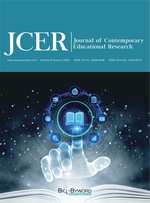Abstract
In this paper, there are certain key factors that have a huge impact on learner identity. The difference in identity may either contribute or impede the process of language learning in EFL/EAL settings. Language socialization may be an effective strategy for facilitating the formation of learner identity in language learning.
References
Barnett J, Antenucci R, 2006, Language Learner Identities and Professional Standards for TESOL Practitioners. TESOL in Context, 16: 129-146.
Murray DE, Christison M, 2010, Learner Identities, in What English Language Teachers Need to Know Volume I: Understanding Learning, Routledge, New York, 3-15.
Ellis R, 2008, Individual Learner Differences and Second Language Learning, in Study of Second Language Acquisition, 2nd Edition, Oxford University Press, Oxford, 643-723.
Garcia-Pastor MD, 2018, Learner Identity in EFL: An Analysis of Digital Texts of Identity in Higher Education. Digital Education Review, 33: 55-76.
Toohey K, Norton B, 2010, Extract of Chapter 12: Language Learner Identities and Sociocultural Worlds, in The Oxford Handbook of Applied Linguistics, 2nd Edition, Oxford University Press, New York, 178-188.
Gee JP, 2004, Learning Language as A Matter of Learning Social Languages Within Discourses, in Language Learning and Teacher Education: A Sociocultural Approach, Multilingual Matters, Clevedon, 13-31.
Mitchell R, Myles F, 2004, Second Language Learning: Key Concepts and Issues, in Second Language Learning Theories, 2nd Edition, Routledge, New York, 19-42.
Watson-Gegeo KA, Nielsen S, 2005, Language Socialization in SLA, in Handbook of Second Language Acquisition, Blackwell Pub, Malden, 155-177.
